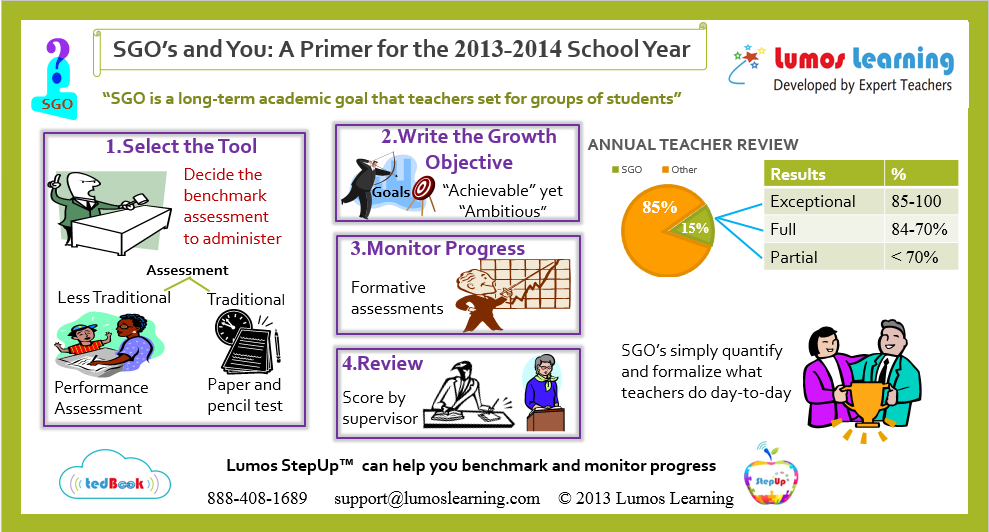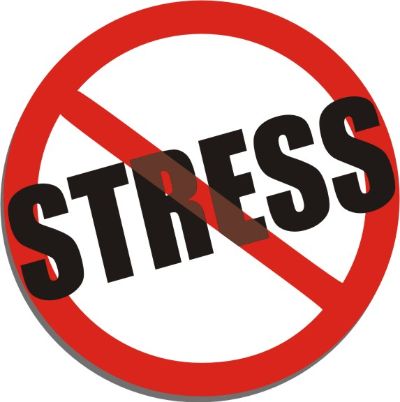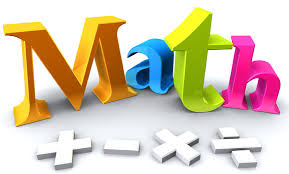Return To Teachers Speak

Student Growth Objectives, otherwise known as SGO’s, are on the minds of many Educators this month, as the November 15 deadline for approval grows closer. For those of you who are still a bit unclear on the particulars, below is a brief Description of SGO’s – what they are, how to create them, and what this all means to You as a teacher.
What are SGO’s?
According to AchieveNJ, a “Student Growth Objective is a long-term academic goal that teachers set for groups of students” (from AchieveNJ’s SGO Guidebook). No matter what Subject area you teach, you will be required to create an SGO for your students, though the parameters for subject areas vary, depending on if you are teaching a tested or non-tested subject.
How Do I Create an SGO?
AchieveNJ.com provides a “quick start” guide to assist educators, but the general guidelines are as follows:
• Select the Tool
First, you need to decide which benchmark assessment(s) to administer. At this phase, it is important to keep in mind the standards (either the NJCCCS or CCSS, depending on your subject area) so that the measurement tool adequately reflects skills, concepts and content that students must master. The assessment itself may be traditional (such as a pencil-and-paper test, a reading assessment like DIBELS, an AP exam, etc.), or the tool may be less traditional, such as portfolio work or a performance assessment. The number of SGO’s you are required to create depends upon your district and whether you are a tested subject. Non-tested subjects (such as Social Studies, Music, Phys. Ed., etc.) are required to create two SGO’s while tested subjects (ELA, Math) must create 1-2 (districts use their discretion on whether or not they ask their teachers to create one or two SGO’s). Once the tool(s) is (are) selected, teachers administer the assessment to their students early in the school year.
• Write the Growth Objective
Once you obtain results from the assessment, you can move onto writing your objective. You will need to decide if you want to create a general SGO, a tiered SGO (with students designated as low, medium or high), or a specific goal focused on either students or based on class content. When creating the goal, keep in mind that the expectation is that goal is “achievable” yet “ambitious” (from AchieveNJ).
• Monitor Progress
During this phase (from November-May), you will monitor your students’ progress with formative assessments and by differentiating your instruction to meet your students’ needs. Between January and February, you will have the opportunity to check-in with your supervisor to review your students’ progress. If, during that time, you have reason to believe that your objective needs to be revised in some way, you have until February 15 to do so. Adjusting the SGO would involve discussing the revisions with your supervisor and you would also need to receive approval from your district superintendent.
• Review
Your supervisor will score your SGO between May and June, based on your students’ results by the end of the school year. This score will make up 15% of your annual teacher evaluation.
Note: In future years, the deadlines will be somewhat different, as the due date for obtaining SGO approval will be October 15 (as opposed to the 2013 deadline of November 15). This also means that your time to monitor student progress increases in subsequent years, as you will have from October through May to track your class.
What Does This Mean To Me?
As a teacher, an SGO will now be one important component of your annual evaluation. Based on results, you will be evaluated for achieving “exceptional”, “full”, “partial”, or “insufficient” attainment; the difference between these proficiency levels are based on a 15% range in each category. For instance, if 70-84% of your students meet the target, you would be deemed “fully” proficient, and if 85, % or more of your students met the target, you would be evaluated as “exceptional”.
According to the NJEA, it is their hope that this process will contribute to more collaboration, where “teachers take greater control in setting goals and determining priorities based on the students who come into their classrooms” (from the NJEA Review’s article, “OMG: I Have to Create My SGO’s”).
Keep in mind that many teachers already do what SGO’s aim to accomplish, such as: aligning instruction with standards, collaborating with grade partners, adjusting instruction based on students’ needs, and setting goals for your students and professional goals for yourself. In the simplest terms, SGO’s simply quantify and formalize what many quality teachers – like you! – already do day-to-day.






Pingback: jbzscmngbvsbbfbghv
Pingback: Student Performance Objective | thinkeducative